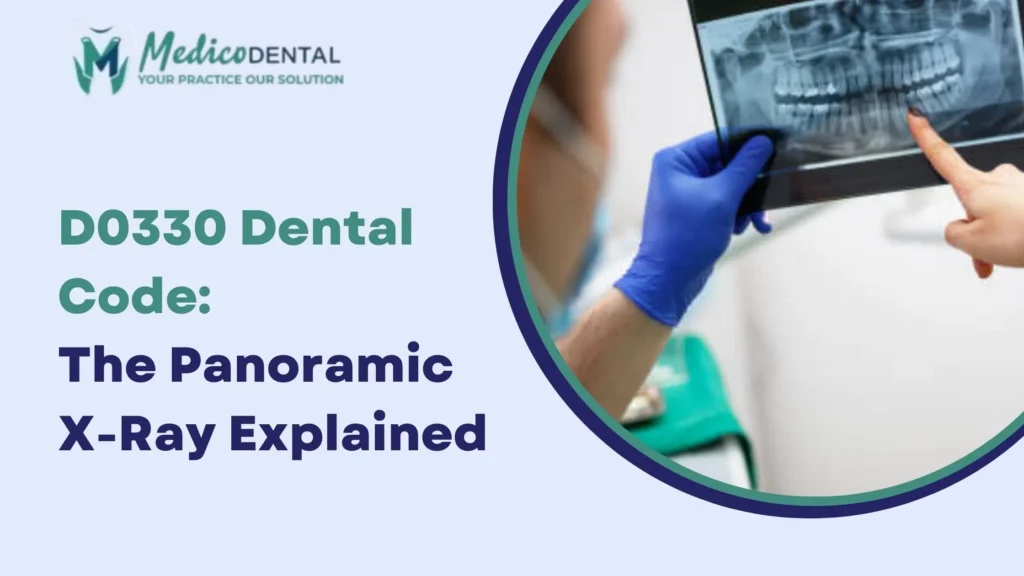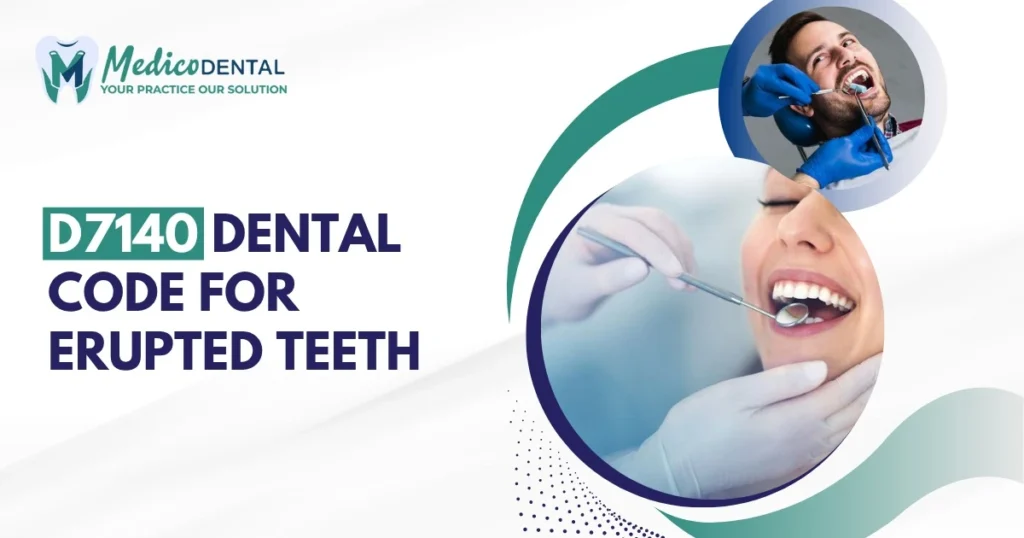The D0367 dental code refers to a specialized procedure used in modern dentistry to capture and interpret a Cone Beam CT (CBCT) scan. This procedure is integral to diagnosing various dental issues and planning treatments, offering a three dimensional view of the teeth, jawbones, and surrounding tissues. Understanding how this code functions and its applications can significantly enhance diagnostic accuracy and treatment planning for patients.
Overview of D0367 Dental Code
The D0367 code specifically relates to Cone Beam CT (CBCT) scans with a field of view that includes both upper and lower jaws, sometimes including the cranium. This scan captures detailed, 3D images that help dentists assess structures in the oral and facial region more comprehensively. The use of CBCT is vital for dental professionals to evaluate complex cases that require a deep understanding of the patient’s anatomy.
Importance of D0367 in Modern Dentistry
Incorporating CBCT scans in dental practices enhances precision and treatment outcomes. The D0367 code allows for advanced imaging that traditional 2D X rays cannot provide, offering clear and detailed views of the jawbone, teeth, and surrounding tissues. This technology helps in diagnosing hard to detect dental conditions and planning more effective treatments, such as implant placements, orthodontic procedures, and surgeries.
What is D0367 Dental Code?
Definition and Detailed Explanation
The D0367 code covers Cone Beam CT (CBCT) imaging with a field of view that captures both jaws (maxilla and mandible) and possibly the cranium. It is used by dental professionals to perform detailed 3D imaging, aiding in the diagnosis and planning of various dental treatments. This technology uses a rotating X ray source and detector, which produces a series of images that are then reconstructed into a 3D model.
Understanding the D0367 Procedure
The D0367 procedure involves capturing a 3D X ray of the upper and lower jaws using a cone shaped beam of radiation. This allows dentists to visualize the bones, teeth, and surrounding structures in great detail. The resulting images help to diagnose conditions such as impacted teeth, jawbone deformities, and conditions requiring surgical intervention. It is a non invasive and highly accurate imaging technique that plays a key role in modern dental treatment planning.
Types of Procedures Involving D0367
The D0367 code is used for a variety of dental treatments, primarily those requiring detailed visualization of the jaws. Here are some of the key procedures where this imaging technique is beneficial:
Implant Planning
CBCT scans provide precise images of the jawbone, ensuring that dental implants are placed in optimal positions.
Orthodontics
Helps orthodontists assess the alignment of teeth and jawbones for more accurate treatment planning.
Oral Surgery
In surgeries like wisdom tooth extraction, a CBCT scan can identify the exact location of teeth and roots in relation to nerves and bone structure.
Root Canal Treatment
For complex cases, CBCT can help visualize the tooth’s root system and surrounding tissues, aiding in accurate diagnosis.
How D0367 is Used in Dental Treatments
Diagnosing Impacted Teeth
One of the most common uses of the D0367 code is for diagnosing impacted teeth, especially wisdom teeth. The 3D images provided by CBCT scans help identify the position of the impacted teeth and their relationship to surrounding structures. This allows for more accurate treatment planning, minimizing risks during surgery and ensuring better outcomes for the patient.
Identifying Jawbone Defects
CBCT scans are instrumental in detecting jawbone defects that may not be visible on traditional 2D X rays. Conditions like cysts, tumors, and bone loss can be identified early, enabling timely intervention. The D0367 code helps professionals assess the severity of such defects, which is crucial for effective treatment planning, whether for implants, reconstructive surgery, or other interventions.
Planning Orthodontic Treatments
For orthodontic cases, the D0367 code is used to capture a detailed 3D image of the patient’s dental and skeletal structures. This helps orthodontists design precise treatment plans, including alignments, spacings, and jaw corrections. It ensures that the treatment will be both effective and efficient, minimizing the chances of complications and optimizing the final result.
Assisting in Implant Placement
Dental implant placement relies heavily on accurate imaging to ensure that the implant fits perfectly in the jawbone. The D0367 code is crucial in this area, as it provides a detailed view of the bone structure and adjacent nerves, ensuring that the implant is placed at the right depth and angle. It helps reduce complications such as nerve damage or implant failure.
How the Cone Beam CT Scan Works
The Technology Behind CBCT Imaging
Cone Beam CT (CBCT) technology works by emitting a cone shaped X ray beam, which rotates around the patient’s head. This process captures a series of 2D images from various angles, which are then reconstructed into a 3D model using specialized software. The resulting images provide a comprehensive view of the oral and facial structures, with greater clarity and detail than traditional X rays.
Benefits of 3D X Ray in Dental Diagnosis
3D X ray imaging offers several benefits over traditional 2D X rays. For example, CBCT scans provide a more complete view of the jawbones, teeth, and surrounding tissues, allowing for better detection of hidden issues. The ability to view structures in three dimensions improves diagnostic accuracy, leading to more effective treatments. Furthermore, the radiation dose is lower than that of conventional CT scans, making it a safer option for patients.
Procedure for D0367 Code
The D0367 dental code involves the use of a Cone Beam CT (CBCT) scan to capture detailed 3D images of both the upper and lower jaws, including surrounding tissues and structures. This procedure plays a crucial role in diagnosing dental issues and planning treatments, such as implants and surgeries. Understanding the steps involved in this procedure helps dental professionals provide better care to their patients.
Steps Involved in the CBCT Scan
The CBCT procedure for D0367 is relatively simple but requires precise execution to ensure accurate results. It typically involves the following steps:
Preparing for the Scan
Before the scan, patients may need to remove any metal objects, such as jewelry, dentures, or hearing aids, to prevent interference with the imaging. The patient is then positioned in the CBCT machine, where they will be asked to stay still during the scan to avoid blurred images. A lead apron may be provided for protection, although the radiation dose is minimal compared to traditional CT scans.
Capturing and Interpreting the Images
Once the patient is positioned correctly, the machine rotates around the head to capture a series of images from various angles. These images are then reconstructed into a 3D model using specialized software. A dentist or oral surgeon will interpret the images to identify conditions such as impacted teeth, bone loss, or jaw deformities, and use the data to create an accurate treatment plan.
Related Dental Codes to Know
Several other dental codes are similar to D0367, each representing different types of CBCT scans or imaging procedures. It’s essential to understand these codes as they may be used for specific imaging needs.
D0364: Cone Beam CT for Partial Jaws
The D0364 code refers to a CBCT scan that captures images of less than one whole jaw. This procedure may be used when only a specific part of the jaw needs to be evaluated, such as in cases involving impacted teeth or localized infections. It helps provide a focused view of the issue without the need for full jaw imaging.
D0365: Full Mandible Imaging
The D0365 code is used for CBCT scans that focus on the entire lower jaw (mandible). This scan is typically employed when assessing issues affecting the mandible, such as fractures, cysts, or implant placement. The full mandible imaging allows dental professionals to plan treatments with a comprehensive view of the area.
D0366: Full Maxillary Arch Imaging
Similar to D0365, the D0366 code is used for CBCT scans that capture the full upper jaw (maxillary arch). It’s particularly useful for assessing issues related to the upper teeth, bone structure, and implant planning. This scan allows for precise treatment planning in areas such as orthodontics, implants, and corrective surgeries.
Billing and Insurance Considerations
Understanding how the D0367 code is billed and what insurance coverage is required is essential for both dental professionals and patients. This helps streamline the financial process and ensures that patients know what to expect in terms of costs.
How D0367 is Billed
The D0367 code is typically billed by the dentist or imaging facility that performs the Cone Beam CT scan. In most cases, it’s treated as a diagnostic procedure, and the cost may vary depending on the facility, the complexity of the case, and the patient’s location. Dental practices will use the D0367 code on their Dental billing forms to submit to insurance companies for reimbursement.
Insurance Coverage and Requirements
Insurance coverage for CBCT scans varies depending on the insurance provider and the patient’s specific dental plan. While some plans may cover the procedure fully or partially, others may require pre authorization or a referral from a dentist. It’s important for patients to check with their insurance provider before the procedure to determine coverage and avoid unexpected costs.
Conclusion
The D0367 dental code plays a crucial role in modern dentistry, providing detailed 3D images that help professionals diagnose complex dental issues and plan precise treatments. By offering a clearer view of the teeth, jawbones, and surrounding tissues, the Cone Beam CT scan enhances the accuracy of dental care, especially in areas like implant placement, orthodontics, and oral surgery.
- The D0367 code represents a Cone Beam CT scan that captures detailed 3D images of the upper and lower jaws, as well as surrounding tissues.
- It is used for diagnosing impacted teeth, jawbone defects, planning orthodontic treatments, and assisting in implant placements.
- The procedure is quick and non invasive, offering a higher level of detail than traditional X rays.
The D0367 code is essential for advancing dental care, providing invaluable insights into complex dental cases. By using CBCT imaging, dental professionals can offer more accurate diagnoses and treatment plans, ultimately improving patient outcomes and enhancing overall dental care.
FAQs
When is D0367 Required?
Ans. The D0367 procedure is typically required when a dentist or oral surgeon needs to assess the full upper and lower jaws for complex dental issues. Common reasons for using D0367 include evaluating impacted teeth, diagnosing jawbone defects, planning orthodontic treatments, and preparing for dental implants. This scan is often used in cases where traditional 2D X rays are insufficient to provide the necessary detail.
How Long Does the Procedure Take?
Ans. The CBCT scan for D0367 is generally quick, typically taking about 5 to 10 minutes to complete. The patient is asked to remain still during the scan, but the actual imaging process is brief. After the scan, the images are processed and reconstructed into a 3D model, which may take an additional few minutes, depending on the complexity of the case.



